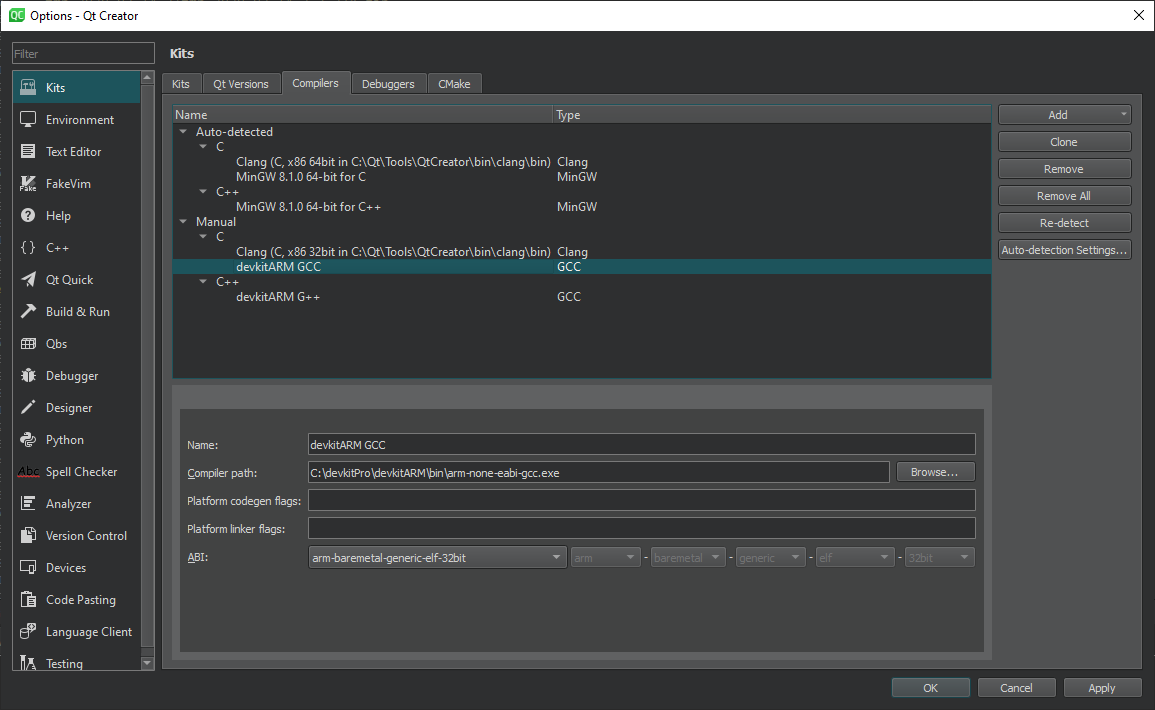
= defaultTheme.navigationBarDividerColor = defaultTheme.navigationBarBackgroundColor For light mode, we use the stored default theme values = Theme.isAndroid ? "transparent" : "#333" For dark mode, we use some nice dark colors Apply the colors for either dark or light mode On other platforms than iOS and Android, we return false Return (uiMode & uiModeNightMask) = configuration.getProperty("UI_MODE_NIGHT_YES") Var uiModeNightMask = configuration.getProperty("UI_MODE_NIGHT_MASK") Var uiMode = configuration.getProperty("uiMode") Var configuration = context.callMethod("getResources").callMethod("getConfiguration") Var context = NativeObjectUtils.getContext() Var uiStyle = application.getProperty("keyWindow").getProperty("rootViewController").getProperty("traitCollection").getProperty("userInterfaceStyle") Var application = uiApplicationClass.getStaticProperty("sharedApplication") Var uiApplicationClass = NativeObjectUtils.getClass("UIApplication") User has selected "follow-system" ui mode, so we check the device setting or if "follow-system" ui mode is selected and the native device dark mode is active Dark mode is active if either selected by the user directly This methods checks it dark mode is currently active This method checks if dark mode is active and applies colors accordinglyĪpp.darkThemeActive = checkDarkTheme(settings.uiMode) RightTextColor: app.darkThemeActive ? "green" : "red" RightText: app.darkThemeActive ? "Active" : "Inactive" Set text and color using a property binding Visible: settings.uiMode = "follow-system" If the item is pressed, we change the ui mode and store the selection If the item is active, we display a checkmark We use an individual left icon for each itemĪnchors.verticalCenter: parent.verticalCenter Binding on the dark theme active propertyĬolor: app.darkThemeActive ? "green" : "red" Our app layout, with the selection of ui modesīackgroundColor: and restored on next application start Any change to this property is stored persistently Create a persistent property called "uiMode" We use ttings as it handles default values very conveniently This could also be done using any other local storage Also check dark mode if app is resumed from background Check if dark mode is active and apply colors accordingly Store the default light colors of the theme Indicates that dark mode is currently active

Import Qt.ttings 1.1 as LS // use own namespace to avoid conflicts Test this example on your mobile phone now! Run This Example import QtQuick 2.7
QT CREATOR DARK MODE CODE
There are also a lot of code comments to help you find your way around this source code: You will learn more about the important parts of it in just a second.
QT CREATOR DARK MODE FULL
When following the device setting, the theme will be applied automatically:īefore we jump into the details, here is the full source code.

This selection is also stored persistently using a simple key/value storage. It allows the user to select a light or dark theme, or just follow the device setting.

Our example application will then look like this:
QT CREATOR DARK MODE HOW TO
In addition, you will learn how to make use of Felgo Native Code Components, read the device settings on iOS and Android, and apply the correct theme automatically. This blog post will guide you through the steps of introducing a dark theme in your own application. If users activate dark mode, they expect their apps to also appear in a dark theme: Here is an example of how this looks in the iOS settings, and how the UI adapts accordingly. For those not familiar, dark mode is a device setting, which indicates that apps should show their UI using dark colors. Finally, you'll also learn how to set up the IDE to build and run new C++ (CPP) projects that you create from the Unreal Editor.If you want to offer an exceptional user experience, one of the features to add is “Dark Mode”. By the end of this guide, you'll know how to configure your IDE to build and run UE4. We don't endorse one IDE over another however, as an example for learning purposes, we've chosen to show you how to configure Qt Creator to build and run UE4. If you're a game developer looking to set up an IDE to work with Unreal Engine 4 (UE4) in a Linux environment, this guide is for you.Īlthough we recognize that chosing an IDE is a matter of individual preference, we've configured UE4 to interface with three IDEs in Linux specifically, Qt Creator, KDevelop, and Codelite. While some developers like to use text editors and command line debuggers to modify their game's source code, most developers prefer to use an Integrated Development Environment (IDE) to edit, debug, and compile their code. At the end of this tutorial, you'll have an Integrated Development Environment (IDE) configured to build and run Unreal Engine 4 (UE4).


 0 kommentar(er)
0 kommentar(er)
